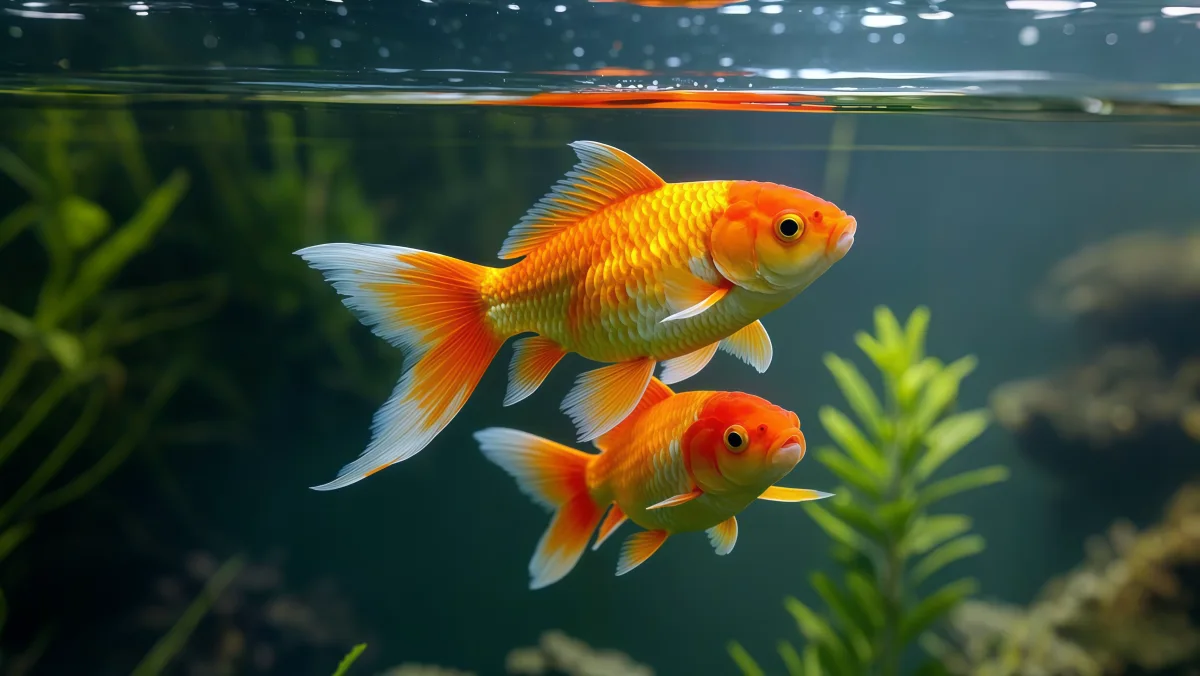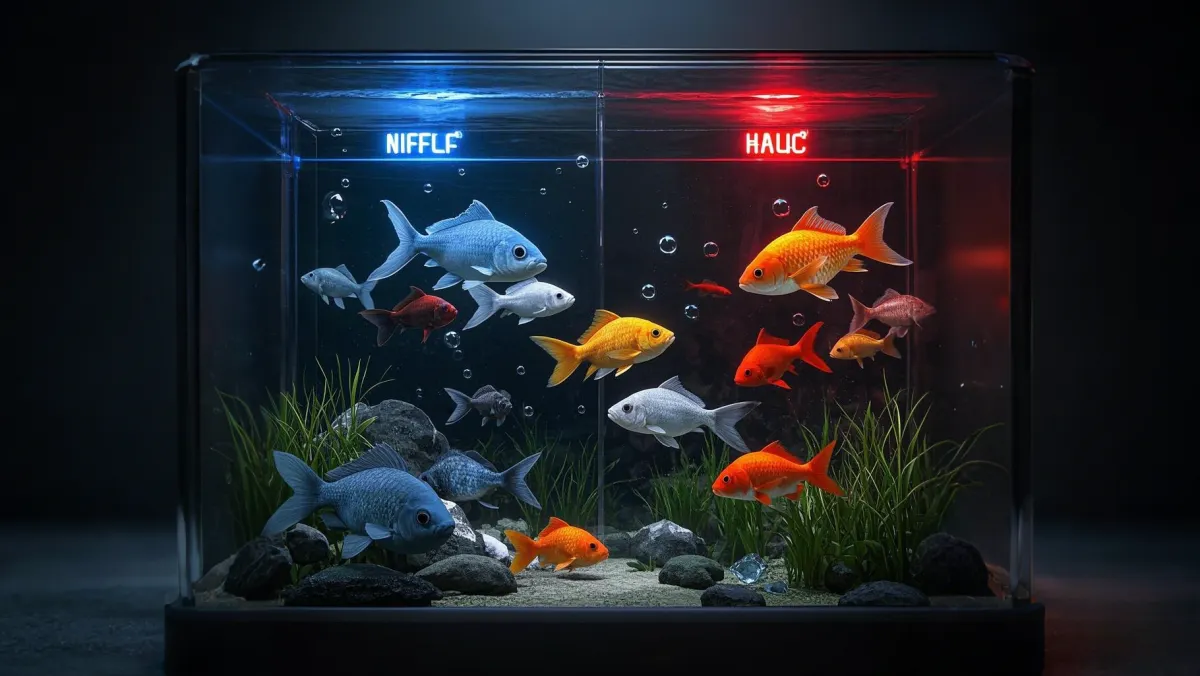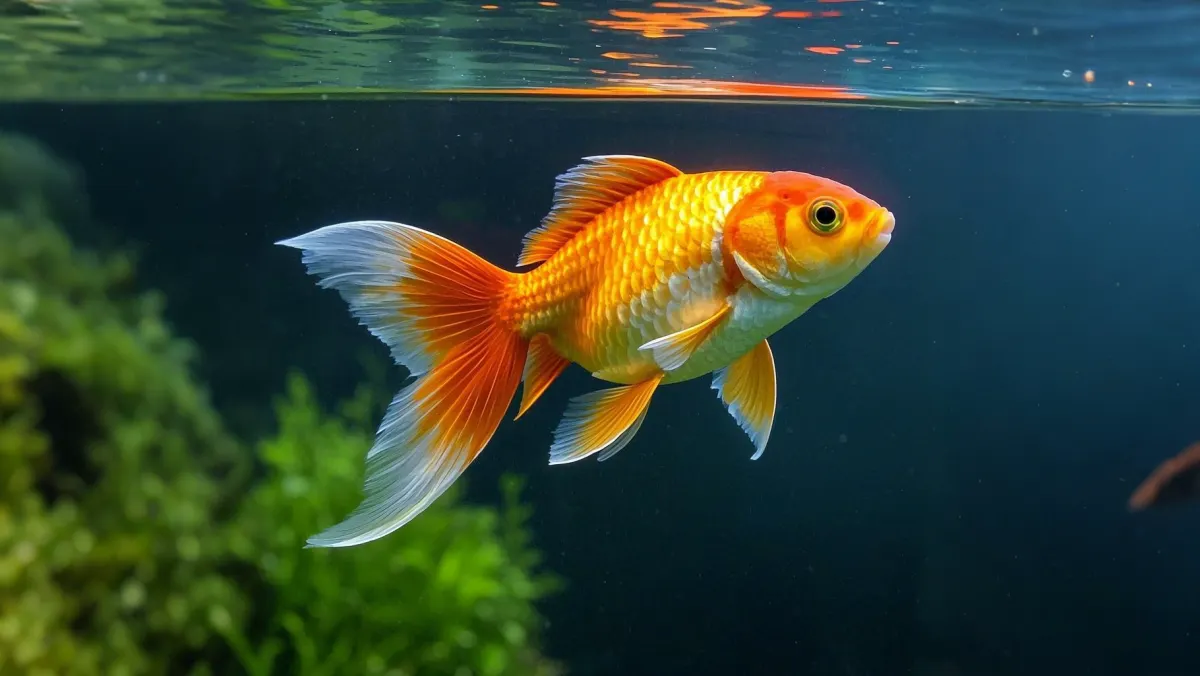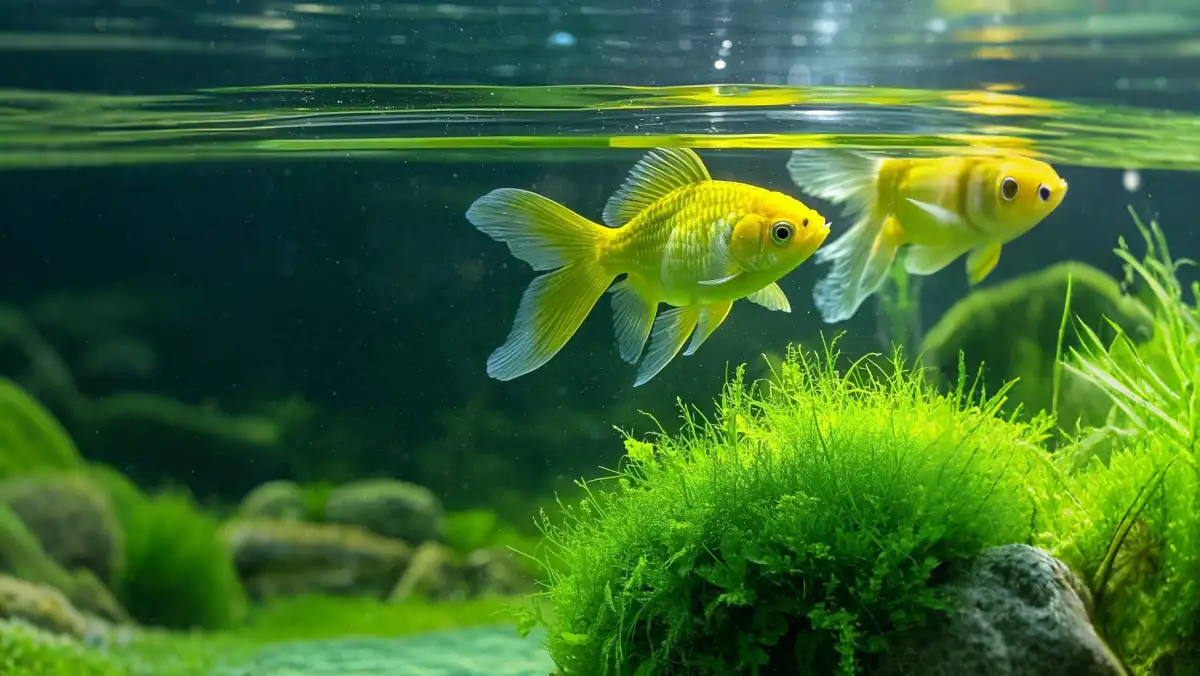How to care for goldfish is a subject that requires careful study, and maintain water quality is particularly important. The importance of water quality to goldfish is self-evident. Good water quality can create a healthy and happy living environment for goldfish. However, poor water quality will seriously damage the health of goldfish.It will cause them to feel unwell, prone to illness, and even endanger their lives.But also need to understand other aspects such as How big do goldfish get, which helps us provide better care for them according to their growth characteristics.

2.Key points of goldfish’s requirements for water quality
(1)To maintain water quality, it is essential to keep the water temperature within a suitable range
To raise fish, you must first raise water. Raising water is the key to raising goldfish. Goldfish are wide-temperature fish with strong adaptability. They can survive in water temperatures of 0-39 degrees. But the most suitable growth temperature is between 20-28 degrees. When the water temperature exceeds 30 degrees, goldfish will feel uncomfortable, and the mortality and morbidity will increase greatly. When the water temperature is below 4 degrees, goldfish will enter a dormant state.
(2)Strictly prohibit drastic temperature changes
It should be noted that goldfish are very sensitive to instantaneous changes in water temperature. Generally, the daily temperature difference should not exceed 10 degrees, and the instantaneous temperature difference should be controlled within 1-2 degrees. Therefore, put the newly bought goldfish together with the packaging into the water and soak it for 1-2 hours, and put it into the fish tank after the water temperature inside and outside the packaging bag is consistent.
(3)Ideal pH range
Goldfish require a pH value range of 5.5-9.5 in the water. However, they prefer neutral alkaline water, with a pH value of 7.5-8.5 as the best.
(4)Removing chloride ions
Chloride ions in tap water are toxic to goldfish and can cause poisoning and death of goldfish. Therefore, we must treat the tap water used to raise goldfish. Usually, we can expose tap water to the sun for about 24 hours. Or we can leave it in the air for 2 – 3 days, or add an appropriate amount of baking soda to the water to remove chloride ions.
(4)Adequate dissolved oxygen demand
Dissolved oxygen in water is also an important factor affecting the growth of goldfish. If the dissolved oxygen is insufficient, goldfish will grow slowly and even float. In severe cases, it will also lead to death.Therefore, when the density of fish breeding in the home is high, we recommend turning on the oxygen pump 24 hours a day. To ensure that there is enough dissolved oxygen in the water for goldfish to breathe.
In short, maintain water quality is crucial for goldfish, and water temperature, pH value, chloride ion content in water and dissolved oxygen are the four key factors in the living environment of goldfish. As long as you grasp these four points, you can create a suitable living environment for goldfish.

3.Key details of goldfish water change
(1)Reasons for water quality changes
Goldfish live in a relatively fixed small environment, and the water quality in this environment will continue to change. For example, when we put neutral water into goldfish, bacteria will act on the fish’s feces and food residues and gradually corrupt the water quality, transforming it into slightly acidic. So we can only let neutral water exist in the fish tank for a short time.In addition, water temperature, dissolved oxygen and other conditions will also change due to the influence of the external environment.
(2)Preparation for water change
In order to ensure that goldfish can live normally, maintain water quality is crucial and water change has become an important means of regulating it. How to change water and when to change water are key links in the process of goldfish breeding, which are directly related to the success or failure of breeding.
First, prepare drying water. Find a pond (or tank, basin, box, etc.), put the newly taken cold water in it and dry it for 2-3 days. The purpose of this is to let the impurities in the water settle down, the chlorine evaporate, and at the same time raise the water temperature to the same temperature as the fish pond. We can use the water after drying as exchange water for fish farming.
(3)Control of water change amount and time
Secondly, the amount of water to be changed should be determined according to the season and water quality.
In spring, the water temperature is low, the dissolved oxygen content in the water is high, and the oxygen consumption of fish is also low. At this time, the amount of water to be changed only accounts for 1/10 of the total water change. As the temperature rises, the activity of fish increases, the metabolism is vigorous, and the amount of food intake and excretion increases. The amount of water to be changed can be increased to about 3/10.
In summer, the water temperature of the fish pond is high, the oxygen consumption of fish increases, and goldfish are prone to “floating” due to lack of oxygen. At this time, the amount of water to be changed should be larger, and measures to reduce the water temperature should be taken, such as appropriately replacing a certain amount of cold water or setting up a water spray device. If the water quality becomes smelly, it is best to change it all. However, fish that have changed the new water generally need to adapt for several hours before they can eat normally. For beginners, it is recommended not to change all the water at once, but to use the method of changing the water multiple times, which can reduce the stimulation to the goldfish.
In addition, it is best to change the water in the morning or after 4 pm. Because at this time, the goldfish has eaten enough and is in a relatively stable state after swimming a little. Before changing the water, you must first clean the remaining materials in the pool, and then slowly add new water.
(4)Taboos for changing water
Finally, you must pay attention when changing the water. Do not pour or rush violently to avoid water flow impacting the fish body and causing goldfish injuries.

4.Steps and techniques for raising tender green water
(1)Identify the water quality type of the fish tank
Raw water: untreated water with hidden hazards
Raw water refers to tap water or well water that has just been released and has not been aired. Its water temperature is quite different from the water temperature of the fish tank, and it contains more chlorine. This is extremely harmful to goldfish. In order to attract customers by making the water in the fish tank clear and transparent, some goldfish market owners will directly inject tap water into the fish tank. This often causes harm to the goldfish of fish lovers. Novice fish lovers should pay special attention.
New water: suitable water after sedimentation and purification
New water is clean water that has been left to settle for 2-3 days in the sun indoors and outdoors and has a temperature equal to or similar to that of the fish tank water.
Dirty water: dirty water accumulated at the bottom
Dirty water refers to dirty water containing feces and dirt at the bottom of the fish tank, including the feeding water in the tank that has not been changed for a long time.
Old water: high-quality fish farming water rich in nutrients
Old water is a general term for clean water in the fish tank that is light green, green, old green or green-brown. Except for the period of time in summer when the water temperature is above 25 degrees, light green water is the best in the other three seasons. There are more floating green algae in old water, which are good supplementary feed for goldfish. In addition, there is less decomposed organic matter in old water and more dissolved oxygen. Raising goldfish with tender green old water will make them have a strong appetite, strong body, bright color and rapid development.
Return to clear water: dangerous water changes that cause diseases
Return to clear water refers to the phenomenon that the old green water in the original tank suddenly turns into clear water, and many green algae settle at the bottom of the tank. This kind of water quality can easily cause goldfish diseases. When a novice encounters this situation, replace all water in the fish tank with new water. New water should be cooled and dried.Don’t clean filter material in the circulation system. Beneficial nitrifying bacteria in filter material help new water turn into tender green water.

(2)Methods for cultivating tender green water
After identifying the water quality in the fish tank, the next step is to cultivate tender green water. The key is to do the following:
Light regulation: adapt to the photosynthetic needs of algae
The first is photosynthesis. If the fish tank is on the sunny side, avoid direct sunlight as too strong sunlight is not conducive to algae reproduction. When the fish tank is illuminated by fluorescent lamps, check whether the lamp’s wattage meets the requirements. If it’s not enough, you can replace the high – wattage fluorescent lamp or extend the lighting time to meet the photosynthesis needs of algae reproduction.
Filtration guarantee: maintain water quality and algae nutrients
Second, establish a good circulation filtration system. This is very important for raising tender green water. Goldfish have a large appetite and a lot of excrement. And they like to forage at the bottom of the tank, which can easily muddy the water. A good circulation filtration system can filter out the feces and impurities discharged by goldfish to ensure the nutrients required for the reproduction of green algae. At the same time, prevent the water quality from becoming turbid and deteriorating. Many novices often encounter water quality problems because they do not have a good circulation filtration system.
Temperature adaptation: help algae reproduce naturally
Third, maintain the appropriate temperature. Generally speaking, the water temperature of indoor fish tanks can meet the reproduction needs of green algae. In addition, sunlight, light, and water circulation filter pumps, oxygen blowing pumps and other equipment will also generate a certain amount of heat when working. These all contribute to algae reproduction.
Water quality balance: blending new water to prevent algae imbalance
Fourth, blend fresh water according to the actual situation. Although tender green water is good for fish farming, it can easily turn into dark green water (i.e. old water) if it is not managed well. When tender green water turns into old green water, algae grow excessively.
“Scalding tail” phenomenon and causes
When there is sufficient light during the day, too much oxygen will be produced, and this oxygen will penetrate into the goldfish fin membrane through the blood circulation, causing the fins to rot. This is the “scalding tail” phenomenon.
“Stuffy tank” phenomenon and causes
At night, excessive algae will consume a lot of oxygen and compete with goldfish for oxygen in the tank. This causes the goldfish to suffocate due to lack of oxygen. This is the “suffocating tank” phenomenon.
In fact, there is a dynamic balance between tender green water and old green water. In this equilibrium state, the pH, dissolved oxygen, nitrite concentration, etc. are all changing, and blending fresh water is the “weight” to control this balanced development.

The process of raising tender green water requires constant observation and practice, which may be difficult for novices. But as long as you master the method and get through the stage of raising tender green water. Goldfish breeding will be half successful.
To provide a good living environment for goldfish, you must first understand the goldfish’s requirements for water quality and then master the skills of maintain water quality. This includes regular water changes and learning to raise tender green water properly. Only by doing so can you provide a good living environment for goldfish and let them grow healthily and happily in the fish tank.


